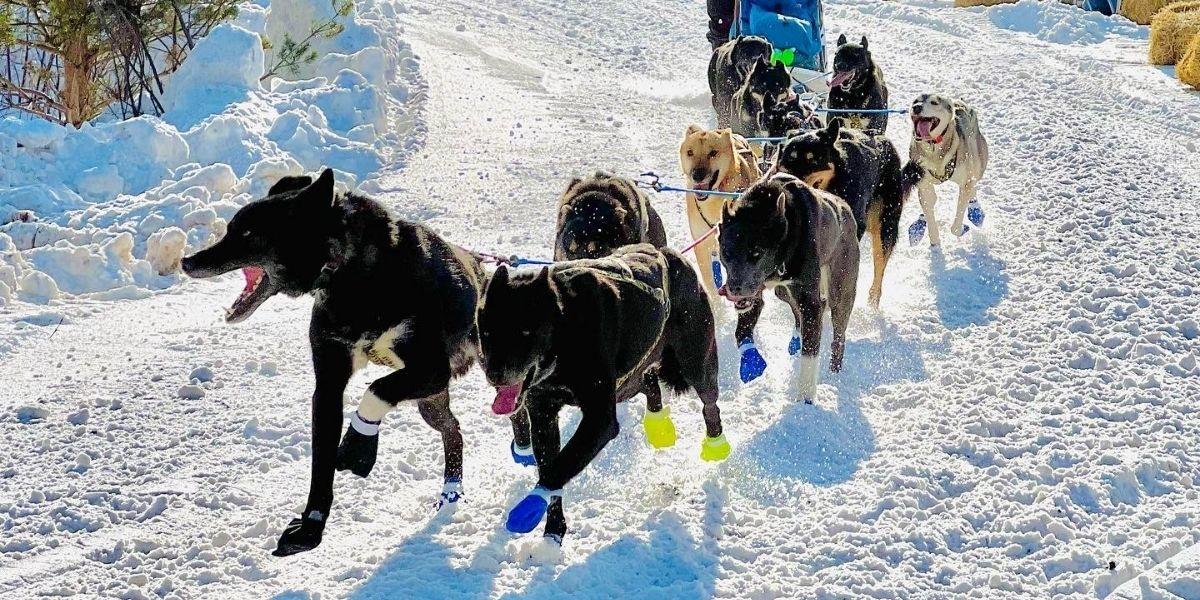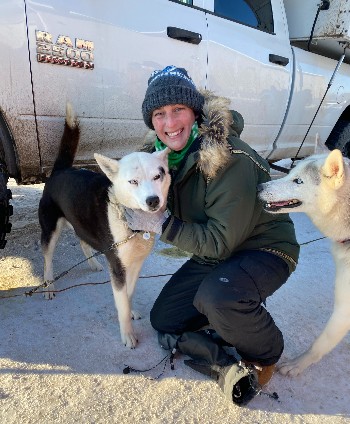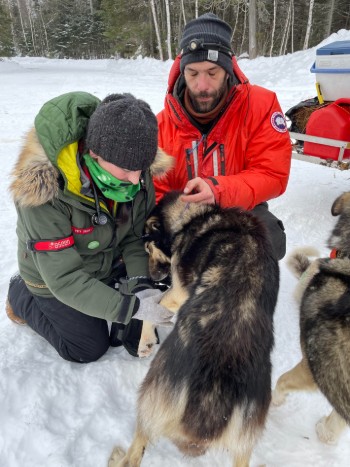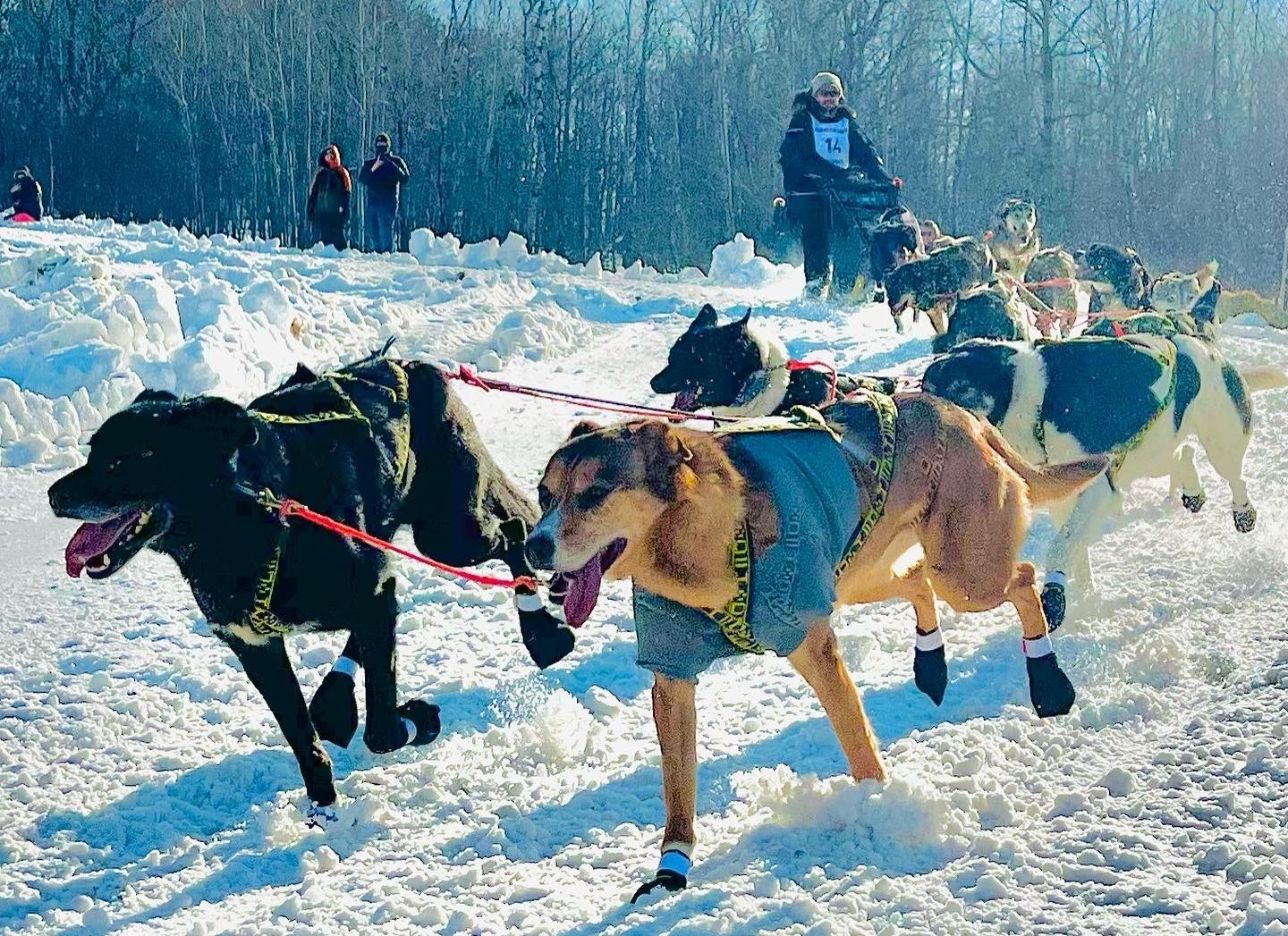Treatment on the trail
CVM alumna Katie Neshek, ’15, DVM, embraces veterinary role at annual sled dog race

CVM alumna Katie Neshek, ’15, DVM, embraces veterinary role at annual sled dog race
Sled dogs run through the snow at the 2022 John Beargrease Sled Dog Race marathon. Photo courtesy of Dora Zucko.
For five days out of the year, Katie Neshek, ’15 DVM, steps away from her job as an emergency veterinarian and into the wilderness of northern Minnesota to treat a very specific type of client.
Each winter, the John Beargrease Sled Dog Race marathon takes teams across a nearly 300-mile trail winding through the Sawtooth Mountains on the North Shore of Lake Superior. Like any other race involving athletes, there are medical personnel on hand to ensure the health and safety of participants.

That’s where Neshek comes in. For eight of the last 10 years, she’s been involved with the Beargrease veterinary team, both when she was a student at the College of Veterinary Medicine (CVM) and as a veterinary professional.
“The medicine itself is kind of wild, it’s like emergency room medicine, which is probably why I liked it,” Neshek says. “You're up at all hours. You're sleep-deprived, hungry, and running on a lot of caffeine. And so it's just a different game. It’s exciting, which I think is why a lot of us do it.”
The opportunity to participate in this unpredictable veterinary environment draws in veterinarians and students from near and far. Among those watching this year’s race was Dora Zucko, a DVM and current graduate student at CVM. Though attending as a spectator this year, Zucko says she hopes to join as a student veterinary volunteer some time in the future.
Neshek credits staff at CVM for encouraging her to get involved with the race as a student. Fast forward a decade, and Neshek has gone from volunteering to serving as head veterinarian for the 2022 marathon race and leading a team of veterinarians, veterinary technicians, and student volunteers.
In addition to managing people, Neshek also was in charge of making sure the team is as prepared as possible. This includes gathering and inventorying supplies, putting together a schedule, and dividing the team into smaller groups to perform exams at checkpoints throughout the race.

Before the race starts, every dog receives a veterinary exam. The vet team documents each sled dog’s body condition, takes vitals, and notes any potential problems, such as splits in the dog’s footpads.
Once the race is underway, the vet groups make their way down the trail to examine and treat dogs as problems arise.
“We always have a group that’s there at the checkpoint before the first team comes in, and then we have one that stays until the last sled team arrives,” Nehsek says. “That way, we know that there are no stragglers and if someone needs it, there’s always a vet available.”
Just like the environment, the type of injuries and illnesses the Beargrease vet team treats vary. Often, they are dependent on the trail conditions, which include factors such as the temperature, amount of snow, and type of snow. Mostly, the group encounters orthopedic injuries to dogs’ legs and hind ends. More rarely seen are conditions such as broken bones, aspiration pneumonia, and rhabdomyolysis.
“Our goal always is to work as a team with mushers and their dogs to get everyone on the trail as happy and healthy as possible,” Neshek says. “We all have the same goal. The dogs are the priority [...] and if they're not doing well then we want to get them the right care.”
